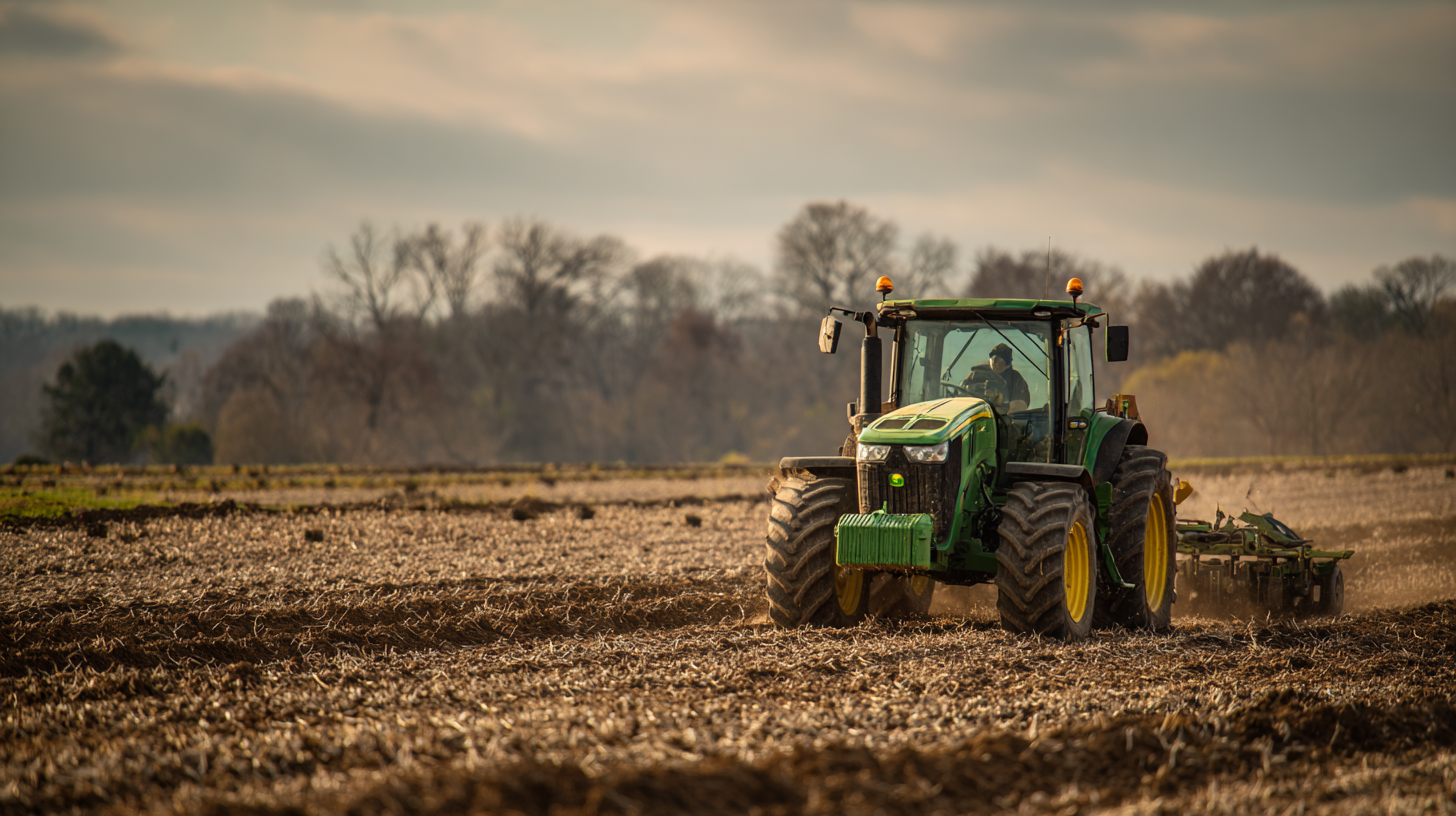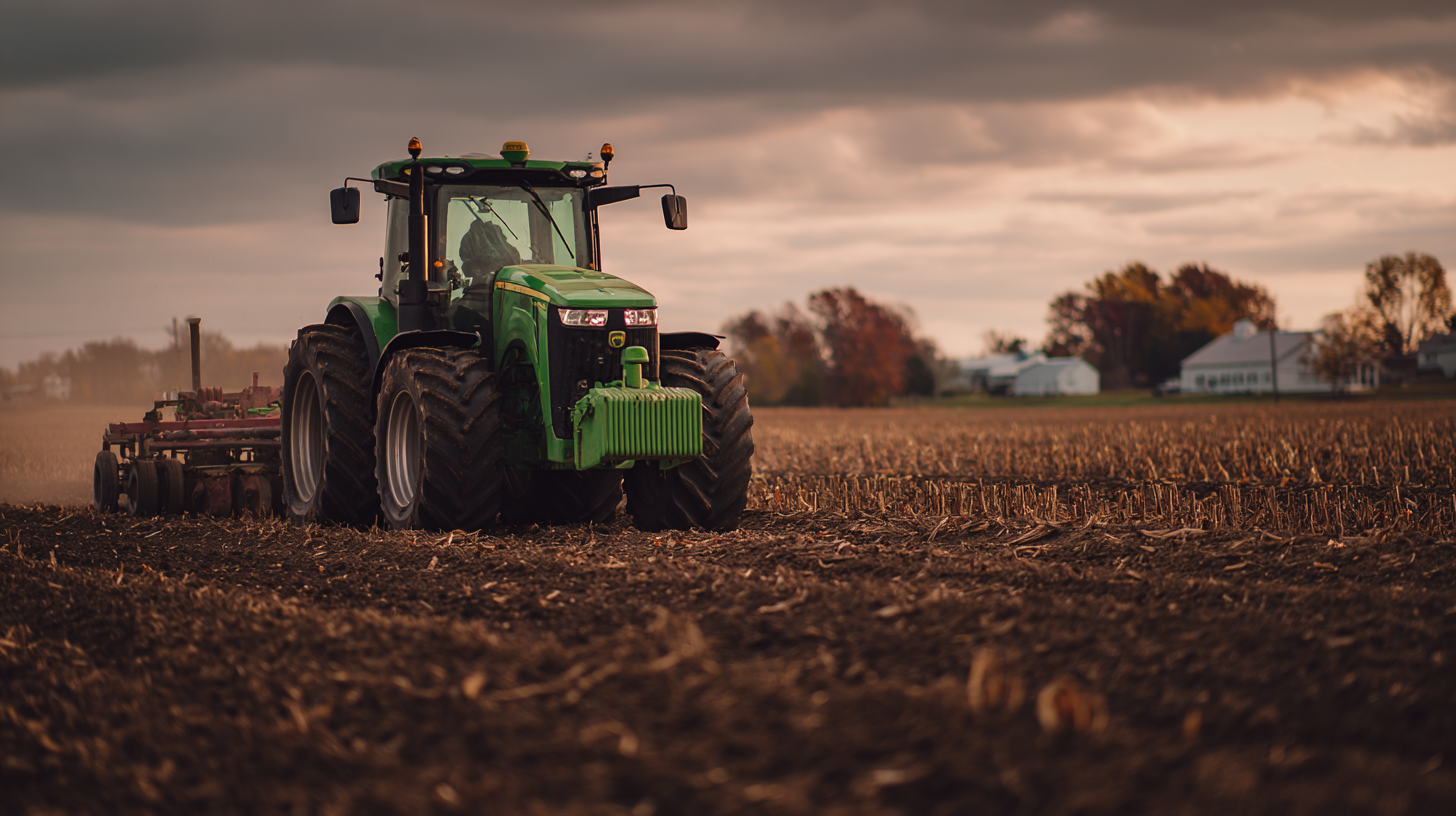In the evolving landscape of modern agriculture, small utility tractors have emerged as invaluable assets for farmers seeking efficiency and versatility. These compact machines are designed to handle various tasks, from tilling and planting to hauling and mowing, making them perfect for small to mid-sized farms. With the right small utility tractors, farmers can unlock a plethora of advantages, including enhanced productivity, lower operational costs, and improved maneuverability in tight spaces. As farming practices continue to incorporate advanced technologies and sustainable methods, understanding the full range of benefits that small utility tractors offer can significantly impact your farming success.

Join us as we delve into how these powerful yet compact machines can meet your agricultural needs and take your farm operations to the next level.
Small utility tractors are becoming indispensable tools for modern farming operations, offering a range of benefits that enhance efficiency and productivity. According to the American Society of Agricultural and Biological Engineers (ASABE), the average productivity increase from using small utility tractors can reach up to 20%. These versatile machines can perform various tasks, from plowing and planting to mowing and hauling, making them suitable for a wide range of farming practices, especially for small to medium-sized operations.
One of the standout advantages of small utility tractors is their ability to navigate tight spaces and perform intricate tasks that larger equipment cannot manage. A report by the National Agricultural Statistics Service (NASS) indicates that over 60% of farms in the U.S. are less than 100 acres, making these compact tractors ideal for efficiently managing smaller plots. Furthermore, small utility tractors often possess improved fuel efficiency, consuming up to 30% less fuel than larger tractors, which can significantly reduce operating costs over time. This efficiency not only supports the bottom line but also aligns with sustainability practices that are increasingly important in agriculture today.
When selecting a small utility tractor for your farming needs, there are several key features to consider to ensure you make the best choice. One of the most important factors is horsepower. Small utility tractors typically range from 15 to 50 horsepower, and understanding your specific tasks—whether it's mowing, tilling, or hauling—will help you determine the power you require. An adequate horsepower will allow you to tackle a variety of tasks efficiently without overworking the engine.
Another crucial feature is the type of transmission. Options range from manual to hydrostatic transmissions, with the latter offering ease of use, especially for those who may be new to tractor operation. Hydrostatic models provide smooth and effortless speed changes, making them ideal for delicate tasks in smaller areas. Additionally, consider the tractor's weight and stability, as these aspects significantly affect performance on uneven terrain. A well-balanced tractor will enhance safety and maneuverability, allowing you to navigate your farm with confidence.

Small utility tractors have become invaluable assets for modern farming, offering versatility and efficiency in a compact size. To truly maximize the potential of your small tractor, certain attachments can make all the difference.
One of the top attachments to consider is a front-end loader. This versatile tool allows you to lift, move, and transport heavy materials with ease, from soil and gravel to bales of hay. A rotary cutter is another must-have for maintaining clean pastures and fields; it can tackle tall grass and underbrush, making it easier to keep your land in shape. Additionally, a tiller attachment can prepare your soil for planting, ensuring proper aeration and mixing of nutrients, which is essential for crop health.
For those who engage in landscaping or gardening, investing in a rear-mounted seeder can save time and enhance efficiency. This attachment promotes even distribution of seeds and can be invaluable during planting season. With the right set of attachments, your small utility tractor can become a powerhouse on your farm, tackling various tasks while saving you time and effort.

Small utility tractors are becoming increasingly vital in the realm of modern agriculture, particularly in enhancing sustainability. According to recent industry analysis, the agricultural equipment market is expected to reach substantial growth by 2032, driven by the rising demand for efficient and environmentally friendly farming practices. Small utility tractors, which account for over 50% of the tractor market share as of 2022, excel in versatility and functionality for medium-sized farms. They enable farmers to perform essential tasks like plowing, planting, and harvesting with greater efficiency, thus promoting sustainable farming methods.
These tractors are particularly advantageous for smaller operations that prioritize eco-friendly practices. The machinery reduces fuel consumption and minimizes soil compaction, contributing to healthier soil and better crop yields. Reports indicate that as farmers transition towards sustainability, the adoption of advanced agricultural machinery, including small utility tractors, will become crucial in meeting both productivity goals and environmental standards. This trend underscores the importance of innovation in the agriculture sector and highlights the role of small utility tractors as essential tools for cultivating a sustainable agricultural future.
Proper maintenance of small utility tractors is essential not only for extending their lifespan but also for maximizing efficiency in farming operations. According to the American Society of Agricultural and Biological Engineers, tractors represent over one-third of all farm equipment costs. Regular maintenance can significantly reduce potential repair expenses, which average around 20% of a tractor's initial purchase price annually. Thus, investing time in maintenance is not just a necessity but also a financially sound decision.
Routine checks on fluid levels, tire pressure, and battery condition can help prevent major breakdowns. Industry experts recommend changing engine oil every 50 hours of operation or at least once a season to ensure optimal performance. Additionally, filters should be replaced according to the manufacturer’s specifications, as clogged filters can lead to inefficient fuel consumption—up to 10% less efficient according to research from the USDA. By implementing these maintenance tips, farmers can not only enhance the longevity of their equipment but also improve productivity on the farm.
| Feature | Advantage | Maintenance Tips |
|---|---|---|
| Compact Size | Easy maneuverability in tight spaces | Regularly check tire pressure and treads |
| Versatility | Can be used for various tasks (plowing, lifting, etc.) | Inspect and clean attachments frequently |
| Fuel Efficiency | Lower operating costs compared to larger tractors | Use high-quality fuel and change filters regularly |
| User-friendly Controls | Easier for beginners and less experienced operators | Familiarize with all controls and perform regular checks |
| Cost-effectiveness | Lower purchase and maintenance costs | Keep a regular service schedule for longevity |